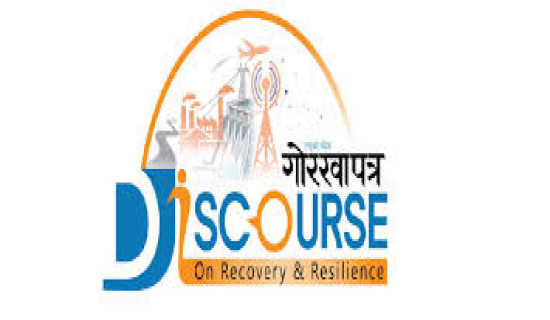- Thursday, 18 December 2025
Human Migration And Population Dynamics In Nepal
Migration stands as a notable demographic dynamic in Nepal, serving as a visible indicator of the prevailing instability. The movement of people from one region to another is driven by their quest for improved prospects in the future, highlighting a waning confidence in the prospects of living in Nepal. While political instability is often identified as the primary driver of this population shift, it is imperative to examine a more comprehensive analysis of underlying factors like natural disasters and the impacts of climate change, the inadequacy of prevailing development models, and the attraction of global opportunities in destinations. Consequently, a multifaceted relationship of factors shapes the migration dynamics in Nepal, prompting a crucial debate on whether to control this trend or grab its potential benefits, which stands at the centre of this discourse.
The phenomenon of people leaving the country, often referred to as the "flight of people," has reached alarming proportions in Nepal. In the fiscal year 2022/23, a vast 771,000 young individuals sought opportunities for foreign employment, highlighting the allure of better economic prospects overseas. Additionally, in 2022, approximately 120,000 young students obtained No Objection Certificates (NOC) from the Ministry of Education, indicating a strong desire to pursue higher education abroad. This trend signifies a substantial outflow of Nepal's young and educated population, driven by their aspirations for improved economic opportunities and better prospects beyond the nation's borders.
Internal migration leading to negative population growth is a pressing issue within Nepal's demographic background. The 2022 population census reveals a significant trend, with 32 per cent of the population relocating from their usual places of residence. Moreover, 34 out of the country's 77 districts are experiencing negative population growth. This demographic shift is amplifying the geographic imbalance, with the hill and mountain regions, which comprise four-fifths of Nepal's land area, witnessing depopulation, while the Terai plains and valleys, covering one-fifth of the land, are bearing the brunt by accommodating nearly two-thirds of the total population. The urban population has surged to around two-thirds, intensifying issues like overcrowding, inadequate infrastructure, haphazard urban development, and a rise in crime rates. Nepal's approach to development still follows a distributive model without thorough analysis, even though the cost of development in remote areas remains notably high. This scenario underscores the urgent need to reevaluate Nepal's distributive development strategy and address the challenges posed by internal migration and regional disparities.
In the realm of economics, Nepal is witnessing a substantial surge in remittances, which has become a crucial element in balancing the national economy. During the fiscal year 2022/23, remittance inflows recorded a remarkable 21.2 per cent increase, amounting to a staggering Rs. 1220.56 billion, in contrast to a mere 4.8 per cent increase observed in the previous year. In US dollar terms, this translates to a 12.1 per cent rise, reaching 9.33 billion USD, as opposed to the 2.2 per cent increase from the preceding year. Remarkably, these remittances now constitute nearly one-fourth of Nepal's GDP, highlighting their paramount importance. Nevertheless, a significant challenge lies in the lack of a precise database to track capital flight, particularly from those permanently residing abroad or pursuing educational expenses abroad. Rough estimates suggest that approximately one-fourth of the GDP exits through formal channels for expenses incurred by Nepali students studying abroad. This flight of capital has immediate results, manifesting in a shortage of active human resources within the country and hindrances to creating a conducive investment climate.
The phenomenon of brain drains, characterised by the emigration of a significant portion of the country's young and talented population, has far-reaching consequences for Nepal. The absence of these young individuals not only hampers developmental initiatives but also disrupts social interactions on various fronts. This dearth of youth is noticeable in aspects ranging from marriage ceremonies to community gatherings and even traditional funeral rituals, where the vitality and participation of younger generations play a crucial role in fostering cultural continuity. Furthermore, the absence of individuals in their reproductive age group has contributed to a decline in the fertility ratio, and the elderly and dependent populations are left feeling increasingly isolated and unsupported. This situation is exemplified by a notable rise in divorce rates in recent years, primarily attributed to the extended separations caused by the migration of one spouse. According to statistics from the National Identity and Civil Registration Department of Nepal, there were 6,644 divorces registered in the fiscal year 2020/21, compared to 5,846 divorces in the fiscal year 2019/20, marking a substantial 15% increase. The long-term impact of this trend is not limited to the loss of talented individuals but also includes a potential shift in priorities for those residing abroad, where aspirations for personal growth may take precedence over contributing to the development of their home country.
Various factors, both pushing and pulling, are instrumental in driving the youth of Nepal to seek opportunities beyond their homeland. Push factors encompass limitations in job opportunities, political instability, and insufficient access to quality education and healthcare, which collectively discourage young individuals and compel them to explore prospects elsewhere. A critical strategy for mitigating this trend involves investing in education and vocational training to align the skills of the workforce with the evolving demands of the job market. Simultaneously, creating a favourable business environment that promotes entrepreneurship and job creation is crucial for retaining local talent. Additionally, fostering a more stable political and economic climate can significantly contribute to retaining the nation's skilled and ambitious youth, ensuring they actively participate in Nepal's development. On the other hand, pull factors also play a pivotal role in attracting Nepal's young population to other destinations.
These factors include the allure of well-paying job opportunities, easy access to travel, the government's remittance-focused foreign employment policy, and the influence of the demonstrated success stories of those who have pursued opportunities abroad. These elements collectively contribute to the attraction of foreign destinations and further encourage the youth to explore opportunities outside Nepal. Balancing and addressing both push and pull factors is essential for managing the flow of the country's youth population and harnessing their potential for the nation's progress.
A substantial proportion of the mobile population highlights the need for a comprehensive policy response. Attempting to restrict people's mobility in today's interconnected global context is a challenging and impractical endeavor. Instead, the focus of population and development policies should address the challenges modelled by both unregulated internal and international migration. There is a pressing need to redefine the development model, with a particular emphasis on considering the demographic aspects of this issue.
Migration, rather than being viewed solely as a problem, should be strategically harnessed as an opportunity to reap economic benefits for the nation. A more constructive approach involves adapting development policies to effectively manage and leverage the dynamics of internal and international migration, ultimately promoting economic growth and stability for the country.
(KC is a Joint Secretary at the Ministry of Health and Population.)
















